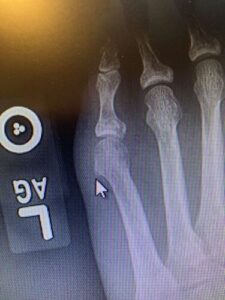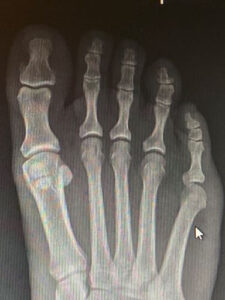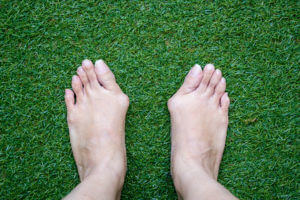Tailor’s Bunion, also known as a bunionette, is a common foot condition that affects many individuals. It can cause cosmetic concerns, pain while wearing shoes, and a progressive deformity. In this article, we will delve into the two types of Tailor’s Bunion and explore the available treatment options. Whether you’re seeking relief from discomfort or looking to address the signs of a bunionette, understanding the condition and its management is essential. Let’s explore this condition together and discover the best path towards healthier, pain-free feet.
Understanding Tailor’s Bunion
Tailor’s Bunion manifests in two forms: enlargement of the lateral head of the 5th metatarsal and curvature in the distal half of the 5th metatarsal. Prolonged shoe wear is a primary factor contributing to the development of hypertrophic tissue between the skin and bone. This tissue growth acts as a cushion in response to the irritation of the 5th metatarsal head. However, it can lead to discomfort, shoe-related pain, and an increasingly visible deformity.
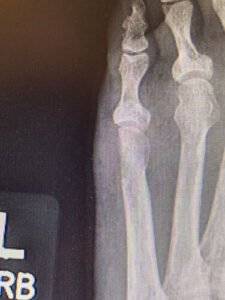
Enlargement of the Lateral Head of the 5th Metatarsal
The enlargement of the lateral head of the 5th metatarsal occurs gradually, often exacerbated by factors such as wearing tight shoes, overpronation, a lowered medial arch, and foot trauma. Tight footwear and a low arch can accelerate the progression of the deformity. Surgical intervention for this type of Tailor’s Bunion typically involves the removal of the enlarged bone from the lateral aspect of the 5th metatarsal head, along with any hypertrophic tissue present in the area.
Postoperative care is crucial for successful recovery. Patients are advised to wear a special shoe for 6-8 weeks, practice regular icing and elevation, and avoid regular shoe use for 8 weeks to minimize pressure on the surgical site. These measures help prevent bone regrowth during the healing process. Walking without crutches is generally allowed, but it’s important to refrain from wearing tight shoes or ski boots for extended periods, as this can lead to bursitis.
Curvature of the Distal 5th Metatarsal
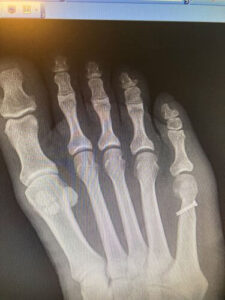
The curvature of the distal 5th metatarsal is a congenital deformity that accounts for half of all Tailor’s Bunion cases. Surgical treatment for this type typically involves a 5th metatarsal osteotomy to straighten the bone. Various fixation methods, such as screws, plates, wires, or pins, may be employed during the procedure. Postoperative care includes wearing a walking boot consistently, regular icing, and elevation for six weeks. Afterward, patients transition to a postoperative shoe for 2-3 weeks before gradually reintroducing regular footwear.
If you’re struggling with the discomfort and cosmetic concerns of Tailor’s Bunion, it’s time to seek expert guidance and professional care. Dr. Elizabeth Auger, a highly experienced podiatrist with over 24 years of practice, is ready to provide you with the comprehensive treatment you deserve. With three convenient Utah locations in Sandy, West Jordan, and Salt Lake City, Dr. Auger invites you to schedule a consultation and take the first step towards healthier, pain-free feet.
Regain Comfort and Confidence, Contact Dr. Elizabeth Auger Today
Don’t let Tailor’s Bunion hinder your quality of life any longer. Trust in Dr. Elizabeth Auger’s expertise and experience as she guides you through the treatment process. With a focus on personalized care and effective solutions, Dr. Auger is committed to helping you find relief from pain and addressing the deformity caused by Tailor’s Bunion.
Schedule an appointment with Dr. Elizabeth Auger today and discover the transformative difference that specialized podiatric care can make in your life. Regain your mobility, enhance your comfort, and achieve healthier feet. Your journey towards improved foot health starts with a simple call or visit to one of Dr. Auger’s Utah locations. Take the leap and experience the expert care that will put you back on your feet with confidence and ease.

